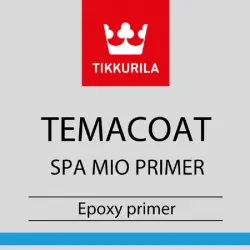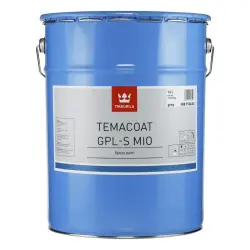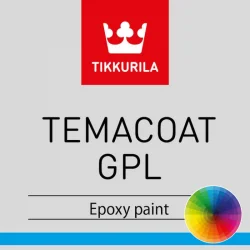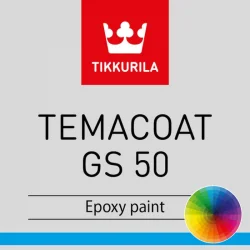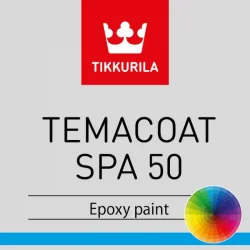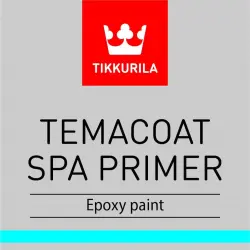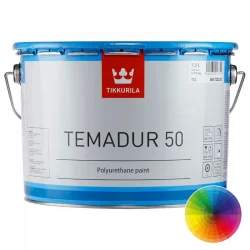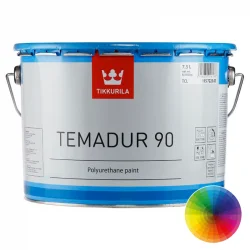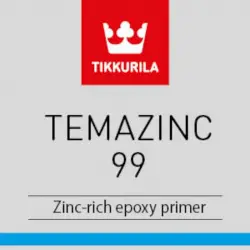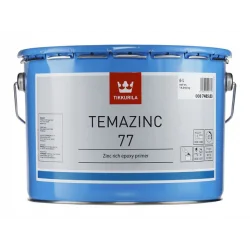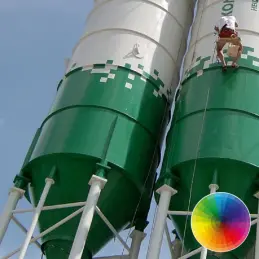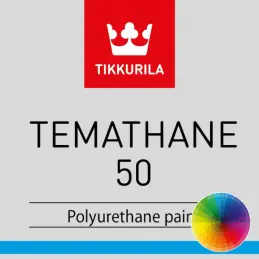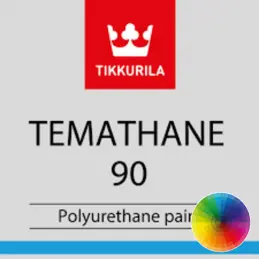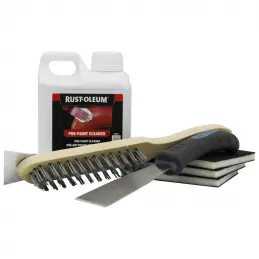Practical coverage depends on the application method, painting conditions and the shape and roughness of the surface to be coated.
| DFT 100µm | 0℃ | 10℃ | 23℃ | 35℃ |
|---|
| Dust dry, after | 16h | 4h | 2h | 1h |
| Touch dry, after | 24h | 10h | 4h | 2h |
| Recoatable, min. after | 24h | 3h | 1h | ½h |
| Recoatable, surfaces to be submerged, min. after | 4h | 28h | 12h | 6h |
| Recoatable with polyurethane paints, min. after | 1h | 5h | 2h | 1h |
Drying and recoating times are related to the film thickness, temperature, the relative humidity of the air and ventilation.
Surface Preparation
Oil, grease, salts and dirt are removed by appropriate means. (ISO 12944-4)
Steel surfaces:
Blast clean to grade Sa2½. (ISO 8501-1)
If blast cleaning is not possible, phosphating is recommended for cold rolled steel to improve adhesion.
Zinc surfaces:
Sweep blast clean with mineral abrasives, e.g. quartz sand, to an even roughness. (SaS, SFS 5873)
If sweep blasting is not possible, the surface should be roughened by hand abrading or washed with Panssaripesu detergent.
For hot dip galvanized surfaces see separate application instructions or contact Tikkurila Technical Service/Rawlins Technical on 0113 2455450 (option 2) or send a message to [email protected].
Aluminium surfaces:
Sweep blast clean with non-metallic abrasives to an even roughness. (SaS, SFS 5873)
If sweep blasting is not possible, the surface should be roughened by hand abrading or washed with Maalipesu detergent.
Primed surfaces:
Oil, grease, salt and dirt are removed from the surface by appropriate means.
Repair any damage to the primer coat. Note the overcoating time of primer. (ISO 12944-4)
Recommended Primers
Recommended Topcoats
Application Conditions 
All surfaces must be clean and dry and free from contamination.
The temperature of the substrate should not fall below 0°C during application and drying.
The surface temperature of steel should remain at least 3°C above the dew point.
Care has to be taken that there is no ice on the substrate.
The temperature of paint itself should be above 15°C for proper application.
Good ventilation is required in confined areas during application and drying.
Note! There is a natural tendency of this coating to chalk, discolor or yellow unevenly. It is recommended to use polyurethane topcoat when there are high aesthetical requirements on colour appearance.
Mixing Components
First stir base and hardener separately.
The correct proportions of base and hardener must be mixed thoroughly before use.
Use power mixer for mixing.
Insufficient mixing or incorrect mixing ratio will result in uneven drying of the surface and weaken the properties of the coating.
Application
For airless spraying, the product is thinned approximately 0–10%.
Recommended nozzle tip is 0.015"–0.021" and pressure 120–180 bar.
Spray angle shall be chosen according to the shape of the object.
For brush application the product should be thinned according to the circumstances.
Thinner/Cleaner
Thinner 1031.


